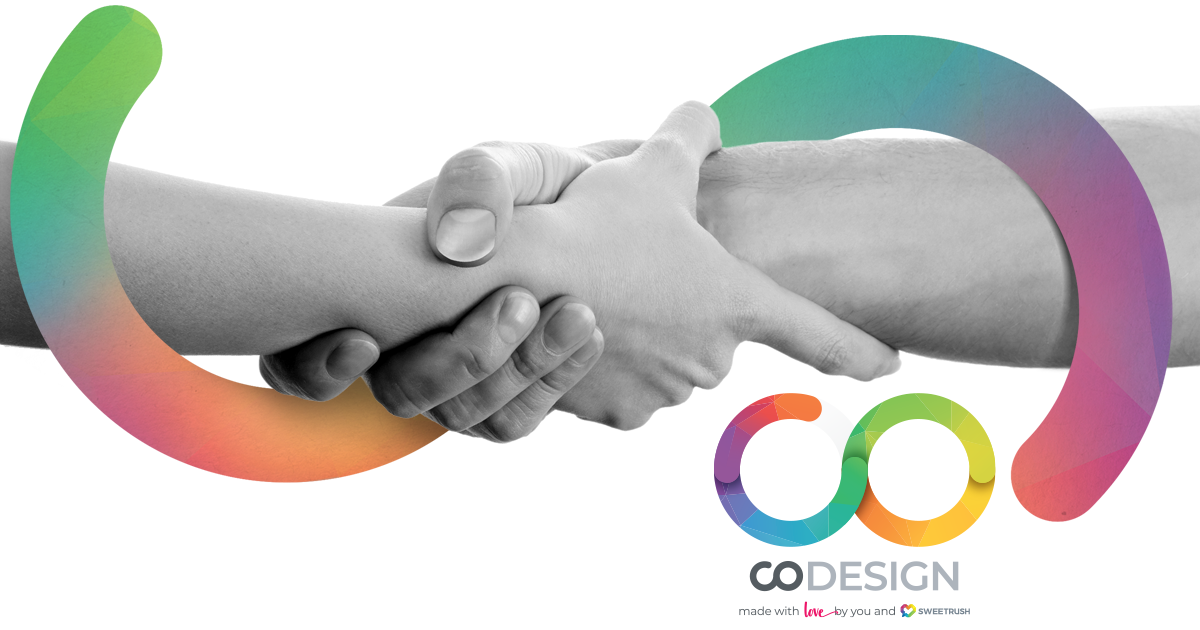If you’ve ever been frustrated by poorly designed training that didn’t consider your needs as a learner, trust us, there’s a better way. Enter design thinking for learning, which we call CoDesign.
Let’s face it—company-sanctioned learning has a bad reputation. Yes, I work for SweetRush—the top eLearning company in the world—and I just wrote that. While I have spent my career thinking about ways to overcome this reputation, I too am put in the learner seat sometimes; and, frankly, most of the stuff out there sucks.
My Own Experience with Corporate Compliance Training
Due to a change in the law, I had the…pleasure…of sitting through an hour-long sexual harassment module recently. It was an off-the-shelf program produced by…well, not SweetRush. During each of those 60 minutes, I felt the acute pain of an adult learner in the corporate world today. I kept asking myself, “Who thought this would hold my attention?” “Am I actually learning anything from this?” and, a sadder question, “Did the learning designer even care to ask these questions?”
As learners, a few things are known: Compliance training isn’t negotiable; task-based learning and professional development are important for us to be effective and grow in our careers. But, what if I told you that YOU can be a learning hero and help design learning experiences that hit the mark for you and your peers? What if you had a say in what that learning looks, sounds, and feels like? What if it were tailored to you and your peers, and drew you in and made you actually want to do it?
I invite you to be a learning hero.
The Design Thinking Methodology
At SweetRush, we’re integrating the design thinking methodology with learning design, which we call CoDesign. This is a new way to use design thinking, which traditionally is used for product and software development. No matter the end product you have in mind, the key thing to know about design thinking is that it puts a magnifying glass on users before doing any design.
Through the use of various activities, designers empathize with the user’s world, e.g., what they care about and what their lives are like, in order to truly understand what would work for them. Then, they begin designing, often alongside those users, and engage the users in testing their early ideas and prototypes, getting their feedback, and integrating it into revised ideas that are tested again.
Bottom line, it’s an iterative process that starts with a foundation of deep understanding of the user and continues with the user engaged in the design, which produces an end result that’s actually useful!
Applying Design Thinking in Learning and Development
Now let’s talk about how we’re using design thinking to achieve better learning design. Surprisingly, most learning designers skip right to design, taking the word of stakeholders or leaders in the organization for what will “work” for the learner audience without taking the time to ask the actual learners.
This is where you and your cape come in! Let’s say we are about to start designing a learning experience to help you gain new leadership skills. Rather than taking the word of others about what you like and who you are, what if we invited you and a cross-section of your peers (other leaders) to join a design thinking event?
We’ll deeply get to know you and your colleagues—what you enjoy doing in your off time, how you like to learn, and what you know already about specific leadership topics. With that information, we can then work together to design something that you’ll actually learn from and enjoy.
You’ll remain engaged in that process and, when the program is actually ready, and you and your peers sit down to learn, you’ll be the learning hero who deserves the kudos because…it won’t suck. It’ll be designed with the learner in mind, all thanks to you and your hero colleagues.
Grab your cape and come CoDesign with us and, together, we can work to change the reputation of company-sanctioned learning!
Read more about CoDesign, SweetRush’s approach to design thinking for learning:
- Design Thinking: Creating Authentic Learner-Centric Solutions
- Using Design Thinking to Create New Hire Onboarding




